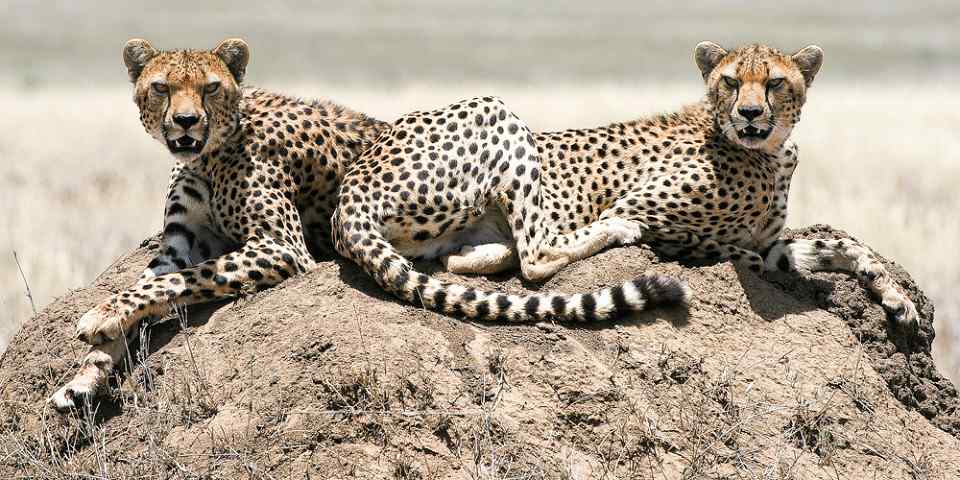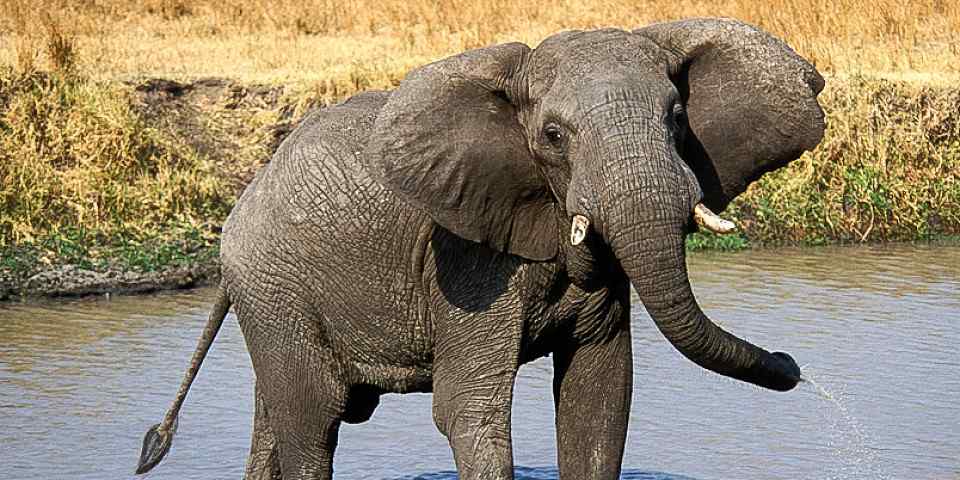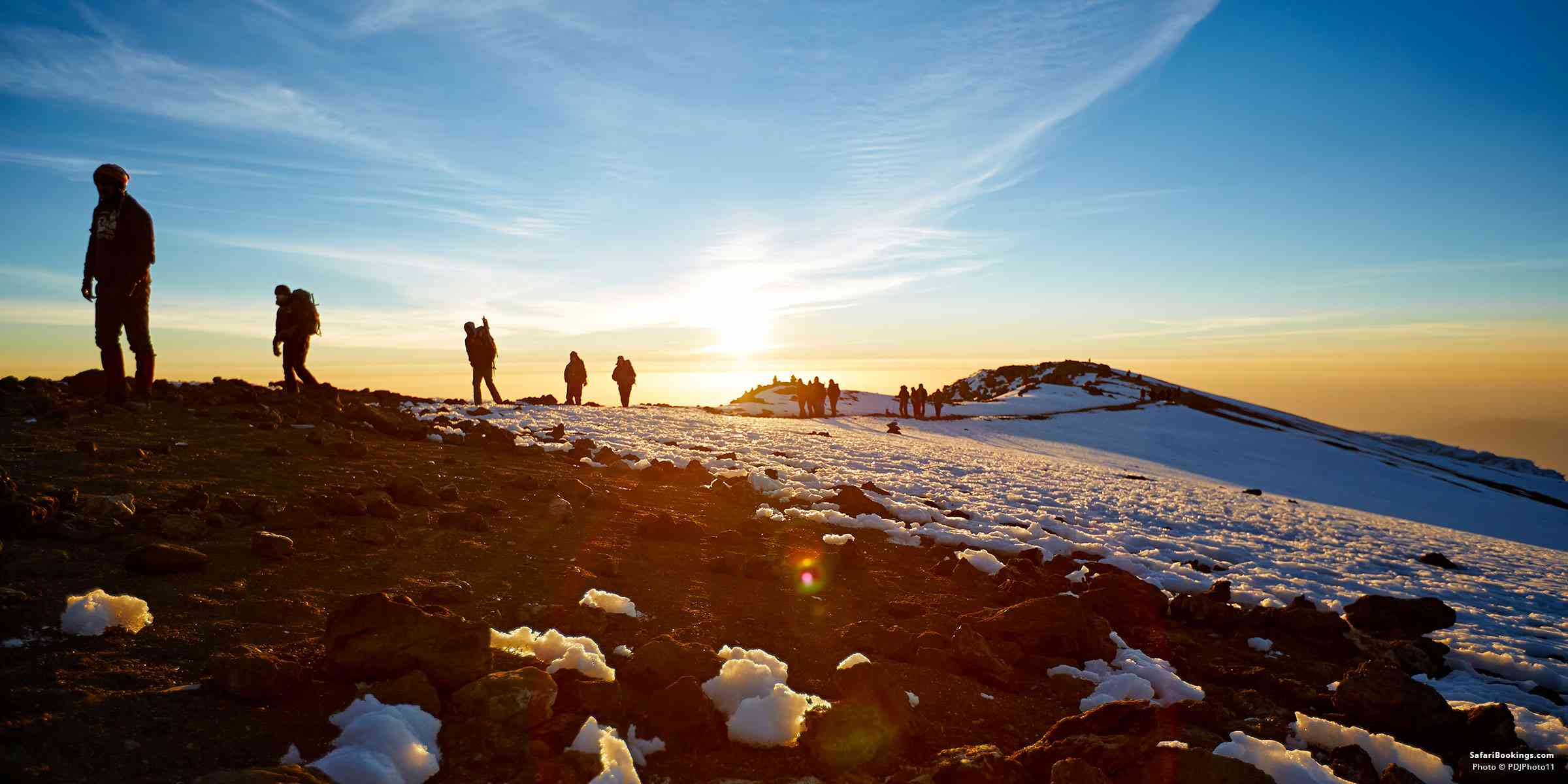
Can You Climb Kilimanjaro Without a Guide?
 By Ariadne van Zandbergen
By Ariadne van Zandbergen Ariadne is an Africa expert. She and her husband form a team who author the Bradt guidebook to Tanzania.
You can’t climb Mount Kilimanjaro without a guide. Whether you go for a full Kilimanjaro climb or a day hike on the mountain, you need to be accompanied by a licensed guide affiliated to a registered company. The guide has many roles. Their number one priority is your safety, but they also take care of all logistics, including the paperwork, porters, food and more. Below we answer some frequently asked questions.
Why Can’t You Climb Kilimanjaro Without a Guide?
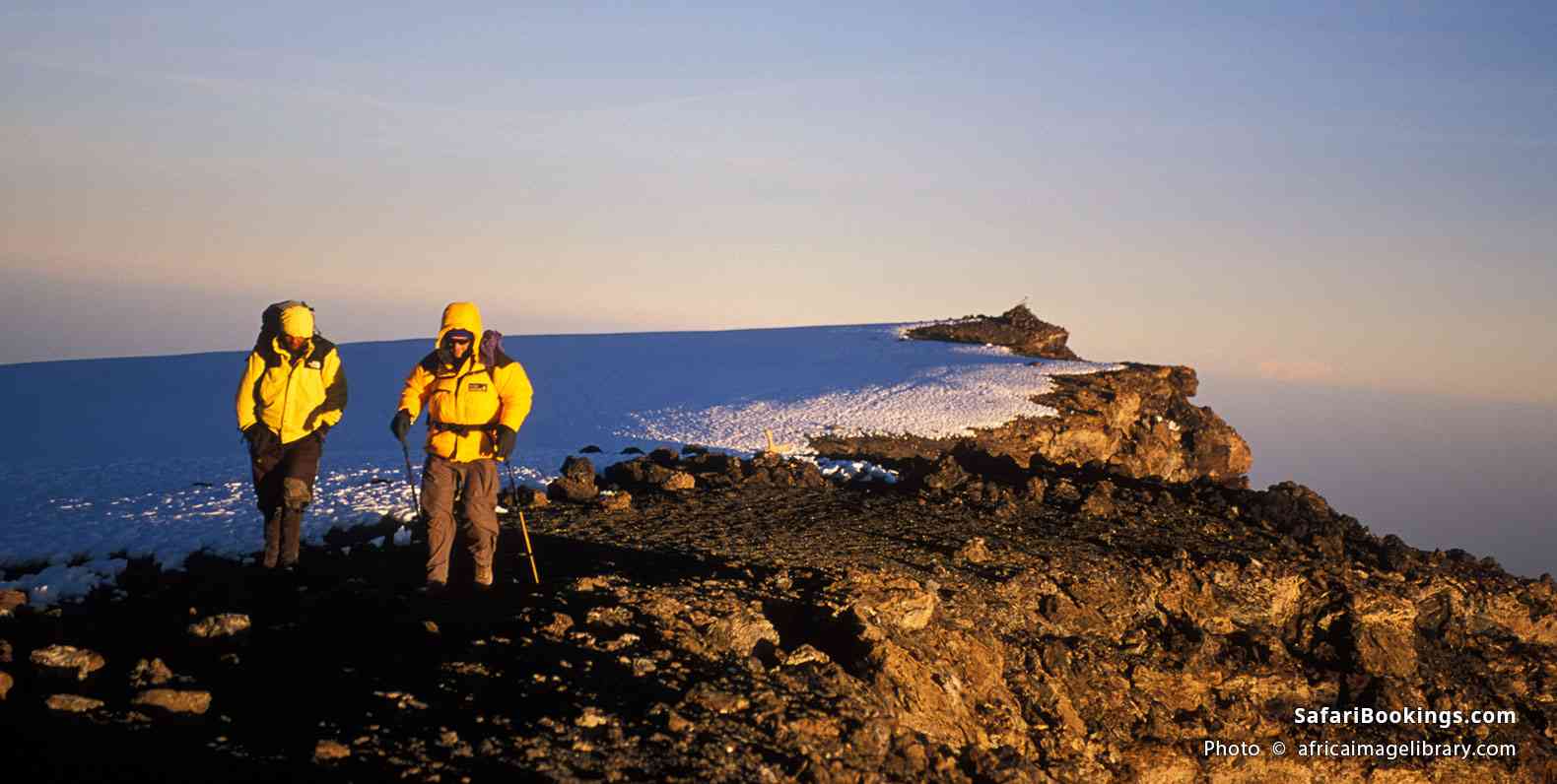 Trekkers on Uhuru Peak, the summit of Mt Kilimanjaro
Trekkers on Uhuru Peak, the summit of Mt Kilimanjaro
The Kilimanjaro National Park Authority (KINAPA) oversees the rules and regulations on the mountain. Its main objective is to keep everybody safe and to minimize the risks involved in climbing Africa’s highest peak. So, unsupported treks on the mountain have not been allowed since 1991.
What Is the Role of the Guide?
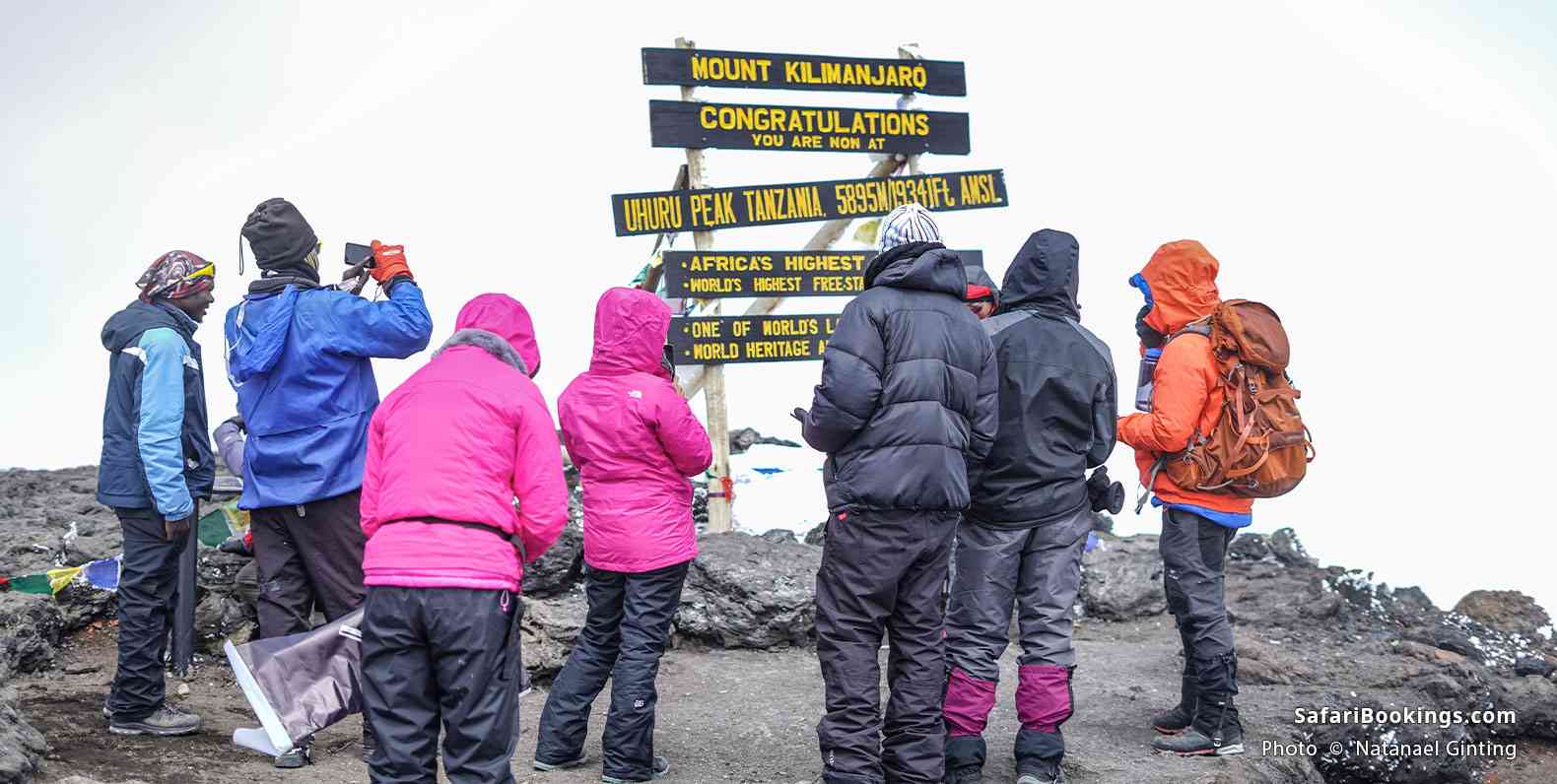 Climbers at the summit
Climbers at the summit
Your guide will lead the way at a leisurely pace, allowing plenty of time for photos and acclimatization. The guide must make sure that all park rules and regulations are followed. When summiting you must stick to the known routes and sleep in the official campsites. Every trekker needs to sign in when arriving at the overnight camp. This way, everyone on the mountain is accounted for at any time.
Although a Mt Kilimanjaro climb is considered relatively easy, altitude sickness can hit anybody. It is the guide’s responsibility to notice if anybody is struggling and to facilitate a guided descent separate from the group if necessary.
What Other Support Crew Is There Apart From the Guide?
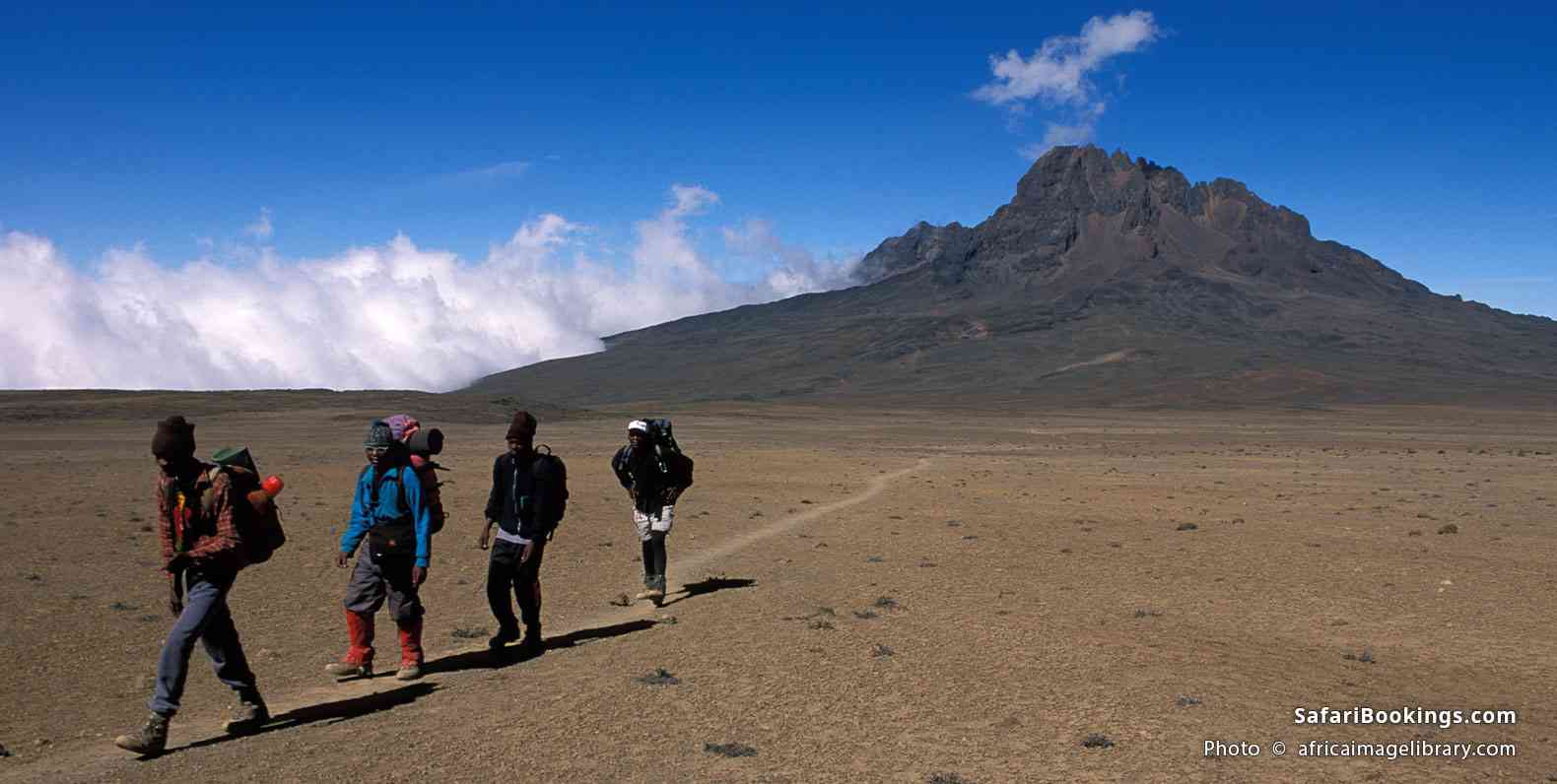 Porters carrying luggage
Porters carrying luggage
A standard Kilimanjaro climb is supported by a team that includes at least one guide (some companies provide one guide per two clients), cooks and many porters. The crew is put together by your tour company. They will also sort out the necessary paperwork and payment of fees. Furthermore, they’ll provide all the equipment and food.
You will struggle to find an operator that will set up a trip with only a guide, but there are a few companies that offer treks with minimal support. On these trips, you would be required to carry most or at least some of your own gear.
What Are the Advantages of a Fully Supported Kilimanjaro Climb?
 Tents below Uhuru Peak
Tents below Uhuru Peak
The support crew is there to make your climb easier. While your guide will be your companion throughout your trek, the porters and cooks do a lot of hard work behind the scenes. The porters will go ahead and set up camp daily before you arrive. The cooks will start preparing the food. Most importantly, the crew knows where to get water for camp. You basically don’t have to worry about any of the logistics of the trip and you’ll only have to carry a small day pack. Needless to say, the success rate of summiting is higher on a fully supported trek than on a trek with only minimal support.
Is a Kilimanjaro Trek With Minimal Support Cheaper Than a Fully Supported Trek?
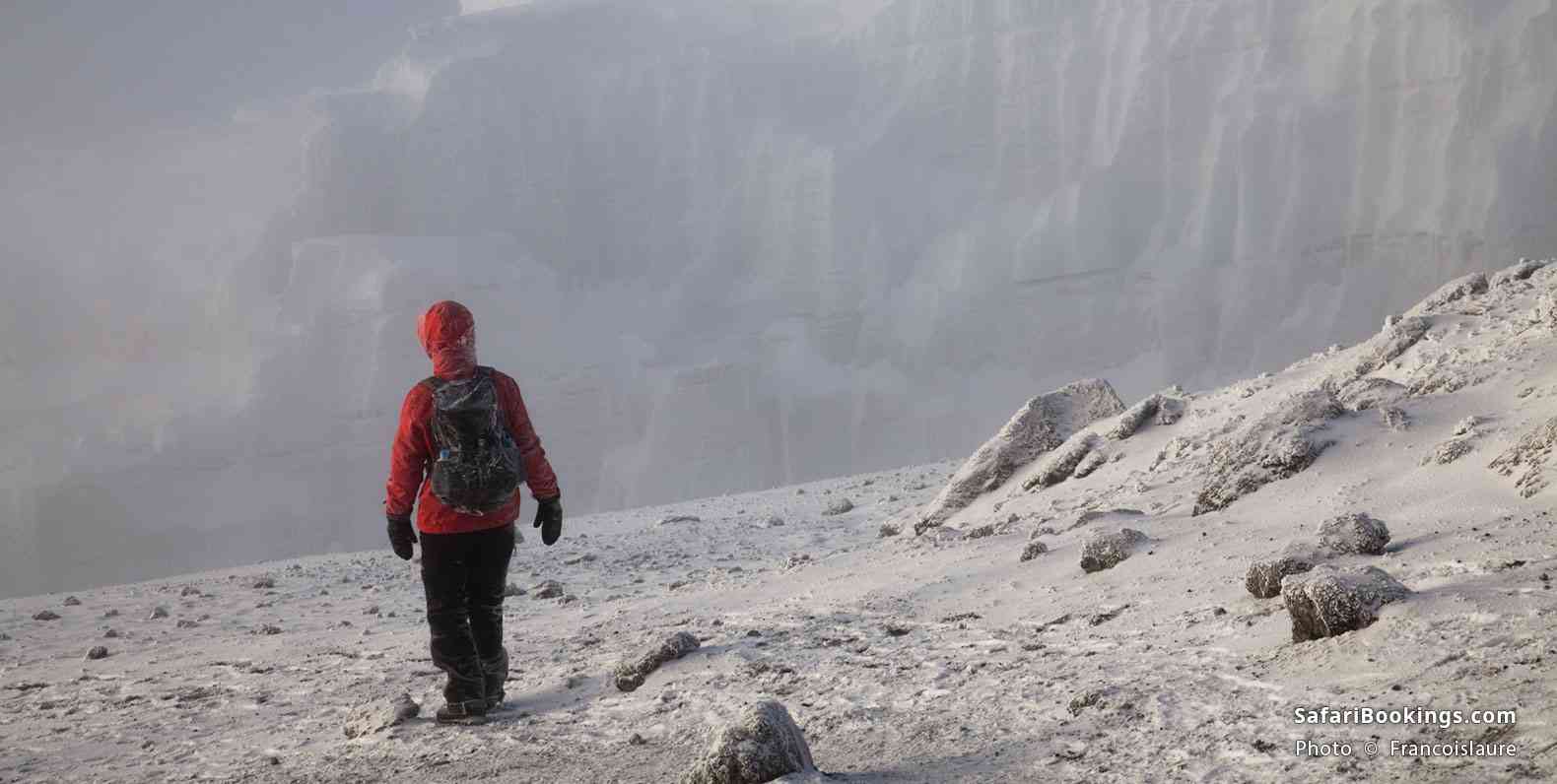 Trekker looking over a glacier
Trekker looking over a glacier
You won’t save any significant amount of money by booking a specialized climb with minimal support. This kind of trek is only offered by a handful of niche operators with little competition. In reality, the porters’ wages are a very small part of the cost of a Kilimanjaro climb. And hiring a few extra porters is ultimately cheaper than investing in ultra-light equipment.
In Conclusion, Should You Book a Trek With Minimal or Full Support?
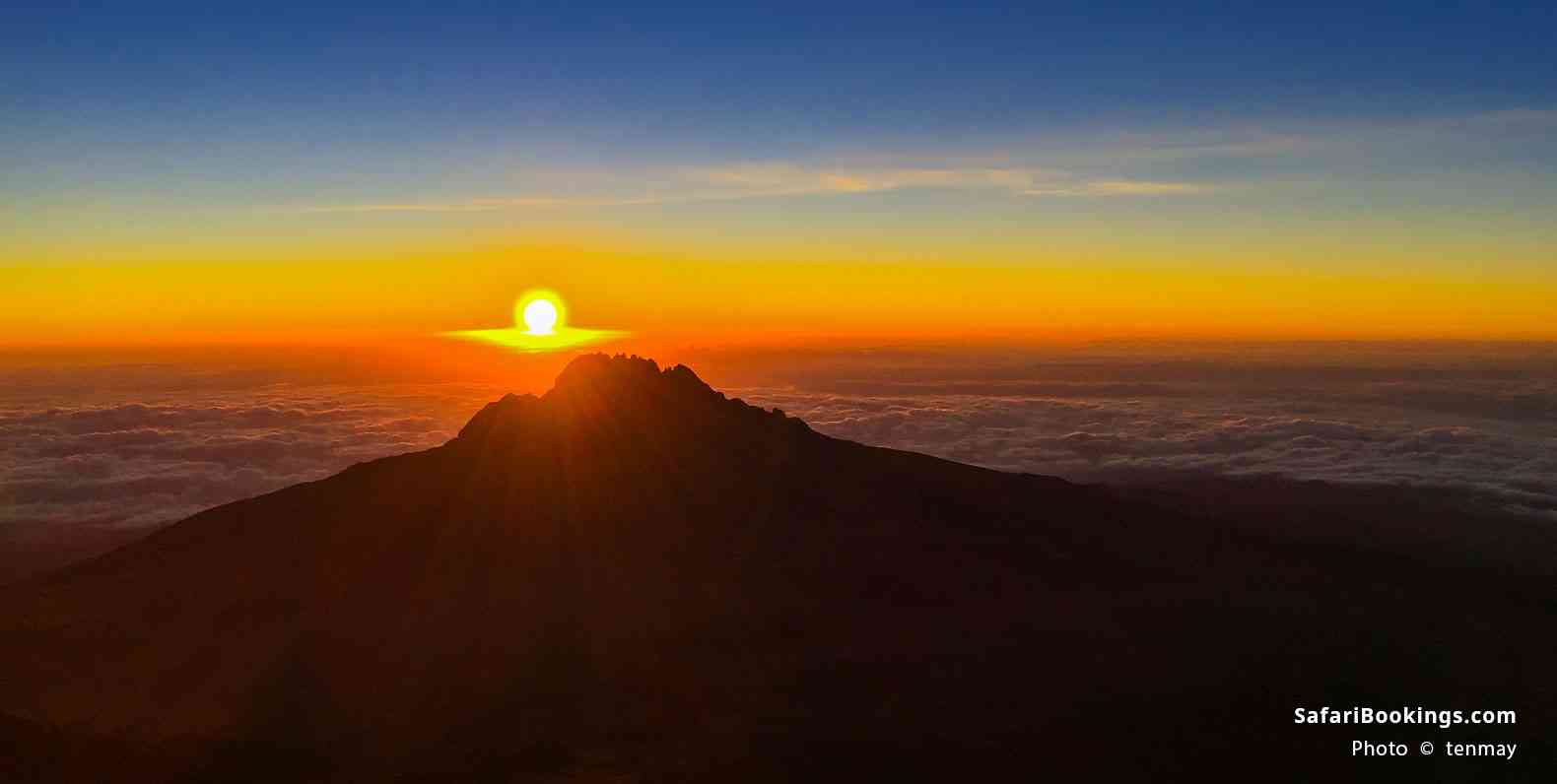 Sunrise over Mawenzi Peak
Sunrise over Mawenzi Peak
So, even if you are an experienced mountain climber and you think you would be able to trek Africa’s highest mountain unsupported, it simply isn’t permitted. If you really want the extra challenge and you’re confident you’re physically capable, you can consider booking a trek with minimal support.
Alternatively, let the professionals take charge and embrace the fact that you won’t have to carry a heavy pack and that someone will prepare your meals and make sure there is plenty of water for drinking, cooking and even washing. Enjoy the warm hospitality of your Tanzanian crew who will do everything they can to make this once-in-a-lifetime trip one you’ll cherish for years to come.
Want To Climb Mt Kilimanjaro?
Click on the button below to compare Mt Kilimanjaro climbing, trekking and hiking tours offered by top-rated tour operators.
 By Ariadne van Zandbergen
By Ariadne van Zandbergen Ariadne is an Africa expert. She and her husband form a team who author the Bradt guidebook to Tanzania.
More About This AuthorSafari Tours to Tanzania
-
![8-Day Mid-Range Serengeti Migration Safari]()
8-Day Mid-Range Serengeti Migration Safari
$3,045 to $3,340 pp (USD)
Tanzania: Private tour
Mid-range Lodge & Tented CampYou Visit: Arusha (Start), Lake Manyara NP, Serengeti NP, Ngorongoro Highlands, Ngorongoro Crater, Tarangire NP, Arusha (End)

Lion King Adventures
5.0/5 – 1,313 Reviews
-
![5-Day Magnificent Serengeti - Pure Luxury- All Inclusive]()
5-Day Magnificent Serengeti - Pure Luxury- All Inclusive
$3,537 to $4,602 pp (USD)
Tanzania: Private tourLuxuryLodge & Hotel
You Visit: Moshi (Start), Arusha (City), Ngorongoro Crater, Serengeti NP, Moshi (End)

Kojuu Safaris Africa
5.0/5 – 90 Reviews
-
![10-Day Path of the Wildebeest]()
10-Day Path of the Wildebeest
$3,550 pp (USD)
Tanzania: Private tour
Mid-range Camping & LodgeYou Visit: Arusha (Start), Tarangire NP, Serengeti NP, Ngorongoro Crater, Lake Manyara NP, Arusha NP, Arusha Airport (End)

Josh Dreamland Safari
4.9/5 – 65 Reviews




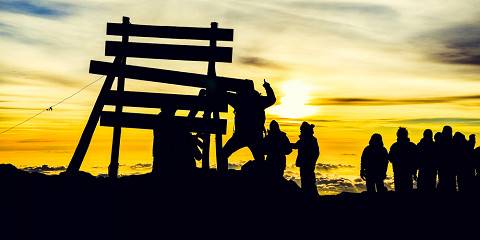

 Subscribe to our newsletter
Subscribe to our newsletter
 Follow us on Instagram
Follow us on Instagram
